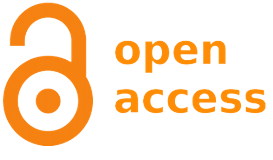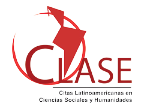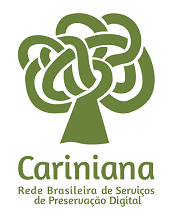The library of the future: a look towards the present
DOI:
https://doi.org/10.5433/1981-8920.2019v24n3p311Keywords:
Technological Innovations, Libraries, Participatory Library, Library Trends, Literature ReviewAbstract
Introduction: the technological innovations arising in the context of libraries are directly linked to their capacity for evolution and adaptation. Discovering and studying which of these new technologies can best be utilized in libraries can be the difference between evolving or suffering. Objective: To map the recent trends found in the scientific literature on the changes that are occurring in libraries. Methodology: a literature review was carried out to determine the main tendencies found in the recent scientific literature, starting in the 2000s, on the innovations and changes that have occurred in libraries. Results: there were some important aspects regarding the libraries of the future: the participatory library, radical trust, the evolution of the web, makerspaces, digital interactive books, social networks and a change in the profile of the professional working in the library. Conclusions: the future of libraries is still uncertain, but it points in some directions, and it is definitely digital, with universal access, but not free, inclusive, social, alive and in constant evolution, a much faster and more dynamic evolution than that observed in the 20th century.Downloads
References
BONFIELD, B. Redesigning library services again: revisiting Buckland's manifesto. In: LEEDER, K.; FRIERSON, E. (Ed.). Planning our future libraries: blueprints for 2025. Chicago: ALA, 2014.
BRITTON, L. A fabulous laboratory: the makerspace at Fayetteville Free Library. Chicago: Public Libraries Online. July/August 2012. Disponível em: http://publiclibrariesonline.org/2012/10/a-fabulous-labaratory-the-makerspaceat-fayetteville-free-library/. Acesso em: 12 outubro 2017.
BRYANT, R.; LAVOIE, B.; MALPAS, C. The realities of research data management. Part 1: A tour of the Research Data Management (RDM) service space. Dublin, OH: OCLC Research, 2017. Disponível em: https://www.oclc.org/content/dam/research/publications/2017/oclcresearchresearch-data-management-service-space-tour-2017-a4.pdf. Acesso em: 12 abr. 2019.
COLEGROVE, P. T. Editorial board thoughts: libraries as makerspace?, Information Technology and Libraries (online), v. 32, n. 1, p. 2-5, march 2013. Disponível em: https://www.researchgate.net/publication/296762967_Editorial_Board_Thoughts_Libraries_as_Makerspace. Acesso em: 12 abr. 2019.
DUDZIAK, E. A. Gestão de Dados de Pesquisa: o que os Bibliotecários (e as Bibliotecas) têm a ver com isso? 2018a. Disponível em: https://www.sibi.usp.br/?p=18600. Acesso em: 12 abr. 2019.
DUDZIAK, E. A. Gestão de dados de pesquisa: o que precisamos saber hoje! 2018b. Disponível em: https://www.sibi.usp.br/?p=17574. Acesso em: 12 abr. 2019.
FLAT WORLD BUSINESS. Web 1.0 vs Web 2.0 vs Web 3.0 vs Web 4.0 vs Web 5.0: A bird's eye on the evolution and definition. 2018. Disponível em: https://flatworldbusiness.wordpress.com/flat-education/previously/web-1-0-vsweb-2-0-vs-web-3-0-a-bird-eye-on-the-definition/. Acesso em: 28 jul. 2018.
FOURIE, I.; MEYER, A. What to make of makerspaces: tools and DIY only or is there an interconnected information resources space?, Library Hi Tech, v. 33, n. 4, p. 519-525, 2015. Disponível em https://www.researchgate.net/publication/283574232_What_to_make_of_makerspaces_Tools_and_DIY_only_or_is_there_an_interconnected_information_resources_space. Acesso em: 12 abr. 2019.
GEERE, D. The history of creative commons. Wired, december 2011. Disponível em: https://www.wired.co.uk/article/history-of-creative-commons Acesso em: 03 abr. 2019.
HARMEYER, D. Radical trust: a user-librarian shared model. In: LEEDER, K.; FRIERSON, E. (Ed.). Planning our future libraries: blueprints for 2025. Chicago: ALA, 2014.
JESUS, D. L. de; CUNHA, M. B. da. A biblioteca do futuro: um olhar no passado. Informação & Informação, Londrina, v. 24, n. 1, p. 1-30, mar. 2019. Disponível em: http://dx.doi.org/10.5433/1981-8920.2019v24n1p1. Acesso em: 03 abr. 2019.
JOHNSON, E. D. M. The right place at the right time: creative spaces in libraries. In: HINES, S. S.; CROWE, K. M. (Eds.) The future of library space. (Advances in library administration and organization), v. 36, p 1-35, 2016.
KENEFICK, C.; WERNER, S. E. Moving towards library 3.0: taking management basics into the future. Journal of Hospital Librarianship, v. 8, n. 4. 2008. Disponível em: https://doi.org/10.1080/15323260802310753. Acesso em: 21 jul. 2018.
KING, D. L. Why Stay on Top of Technology Trends? Library Technology Reports, v. 54, n. 2, p. 6-13, February-March, 2018. Disponível em: http://dx.doi.org/10.5860/ltr.54n2. Acesso em: 14 fev. 2019.
KROSKI, E. The 4 flavors of makerspaces. Open Education Database, 2014. Disponível em: http://oedb.org/ilibrarian/4-flavors-makerspaces/. Acesso em: 10 abr. 2018.
MOOREFIELD-LANG, H. Change in the making: makerspaces and the everchanging landscape of libraries. TechTrends, v. 59, n. 3, p. 107-112, May 2015. Disponível em: https://link.springer.com/article/10.1007/s11528-015-0860-z. Acesso em: 25 fev. 2019.
MORENO, Felipe. 7 empresas (gigantes) que morreram nos últimos anos por não inovar. StartSe Nova Economia. Disponível em: https://www.startse.com/noticia/nova-economia/corporate/25281/7-empresasgigantes-que-morreram-nos-ultimos-anos-por-nao-inovar. Acesso em: 21 jul. 2018.
NOH, Y. Imaging library 4.0: creating a model for future libraries. The Journal of Academic Librarianship, v. 41, n. 6, p. 786-797, nov. 2015. Disponível em: http://dx.doi.org/10.1016/j.acalib.2015.08.020. Acesso em: 28 jul. 2018.
OYELUDE, A. A. What's trending?: Digital training, emerging technologies and publishing, Library Hi Tech News, v. 35, n. 2, p. 13-14, 2018. Disponível em: https://doi.org/10.1108/LHTN-03-2018-0014. Acesso em: 26 jul. 2018.
PALFREY, J.; GASSER, U. Nascidos na era digital: entendendo a primeira geração de nativos digitais. Porto Alegre: Artmed, 2011.
PARADA, A. E. Hacia un inventario provisional de las tendencias en Bibliotecología y Ciencia de la Información. Información, cultura y sociedad, Buenos Aires, v. 33, diciembre 2015. Disponível em: http://revistascientificas.filo.uba.ar/index.php/ICS/article/view/1890/1796. Acesso em: 21 jul. 2018.
PATEL, D. Research data management: a conceptual framework. Library Review, v. 65, n. 4/5, p. 226-241, 2016. Disponível em: https://doi.org/10.1108/LR-01-2016-0001. Acesso em 12 abr. 2019.
RODRIGUES, M. F. A biblioteca do futuro não terá o livro como centro de gravidade, diz Mélanie Archambaud. São Paulo: Estadão, 20 nov. 2017. Disponível em: https://cultura.estadao.com.br/noticias/literatura,a-biblioteca-dofuturo-nao-tera-o-livro-como-centro-de-gravidade-diz-melaniearchambaud,70002090284. Acesso em: 22 jul. 2018.
SARACEVIC, T. Ciência da informação: origem, evolução e relações. Perspectivas em Ciência da Informação, Belo Horizonte, v. 1, n. 1, p. 41-62, jan./jun. 1996. Disponível em: http://portaldeperiodicos.eci.ufmg.br/index.php/pci/article/view/235. Acesso em: 4 abr. 2019.
SHUMAKER, D. The embedded librarian: innovative strategies for taking knowledge where it's needed. Medford: Information Today Inc., 2012. Disponível em: http://books.infotoday.com/books/Embedded-Librarian/Chapter1.pdf. Acesso em: 12 abr. 2019.
TARGINO, R. Direitos autorais: o que os bibliotecários têm a ver com isso? Biblioo: cultura informacional, Rio de Janeiro, 2016. Disponível em: http://biblioo.info/direitos-autorais-2/. Acesso em: 2 abr. 2018.
TORRES-SALINAS, D. Integrados en la investigación: los embedded librarians. Anuario ThinkEPI, v. 5, p. 48-51, 2011. Disponível em: https://recyt.fecyt.es/index.php/ThinkEPI/article/viewFile/30466/16033. Acesso em: 12 abr. 2019.
VINCZE, J. Virtual reference librarians (Chatbots), Library Hi Tech News, v. 34, n. 4, p. 5-8, 2017. Disponível em: https://doi.org/10.1108/LHTN-03-2017-0016. Acesso em: 26 jul. 2018
Downloads
Published
How to Cite
Issue
Section
License
Copyright (c) 2021 Informação & Informação

This work is licensed under a Creative Commons Attribution 4.0 International License.
A revista se reserva o direito de efetuar, nos originais, alterações de ordem normativa, ortográfica e gramatical, com vistas a manter o padrão culto da língua e a credibilidade do veículo. Respeitará, no entanto, o estilo de escrever dos autores. Alterações, correções ou sugestões de ordem conceitual serão encaminhadas aos autores, quando necessário.
O conteúdo dos textos e a citação e uso de imagens submetidas são de inteira responsabilidade dos autores.
Em todas as citações posteriores, deverá ser consignada a fonte original de publicação, no caso a Informação & Informação.














